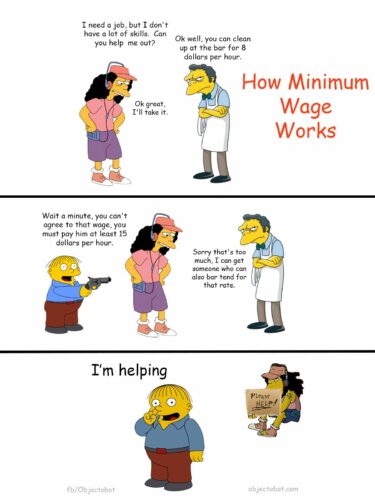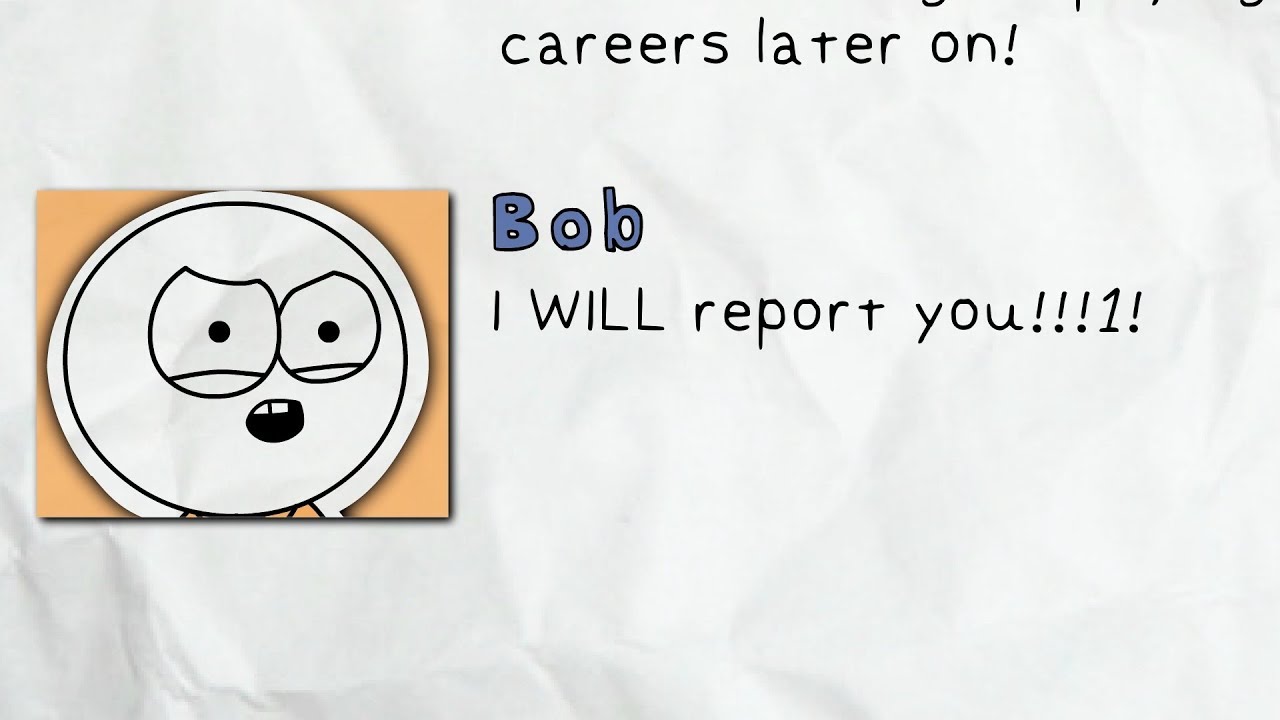By Mark J. Perry, American Enterprise Institute.
Today’s news from the White House is that President Joe Biden will continue his push for a national $15 minimum wage with an executive order that raises pay to at least that level for hundreds of thousands of federal contract workers, according to senior White House officials. The move will increase the current minimum wage of $10.95 by nearly 37% by March of next year and continue to tie future increases to inflation. It will apply to federal workers from cleaning and maintenance staff to food service contractors and laborers, sweeping in tipped workers who were previously left out of the last increase under former President Barack Obama.
The cartoon below illustrates an important, but overlooked fact about the minimum wage and labor markets: Workers compete against other workers, not against employers, for jobs and higher wages. The low-skilled worker below (ex-bus driver Otto Mann on the Simpsons) is willing to work for $8 an hour to help Morris “Moe” Szyslak clean his bar but loses that job opportunity to a more skilled worker/bartender when Moe is forced to pay workers a minimum of $15 an hour due to government fiat (“political wage-setting”).

I wrote about this point several years ago on CD in a post titled “What economic lessons can we learn about the $15 minimum wage law from an ‘$8 per pound minimum beef price law’?“, here’s the key part of that post:
True or False? Unskilled employees compete against employers in the labor market for higher wages.
Answer: False
The Economic Lesson
Despite what we hear from politicians like Bernie Sanders, labor unions, and the “Fight for $15” crowd, employees compete not against employers for higher wages, but against other employees. And it’s also the case that employers compete against other employers for the best employees. It’s like that in every market: buyers (employers) always compete against other buyers (employers), and sellers (employees) always compete against other sellers (employees).
For example, if you’re in the market to buy a home, you’re competing against other home buyers, not against home sellers, to get the best (lowest) price. If the minimum wage is increased from $7.25 or $10 to $15 an hour, that will give skilled workers an advantage over unskilled workers.
And the home sellers are competing against other sellers to get the best (highest) price. As a result, the more buyers competing for a fixed number of available homes, the higher the home sales prices; and the more home sellers competing for a fixed number of buyers, the lower the home sales prices, ceteris paribus.
Economic implications of a $15 an hour minimum wage for the labor market: Unskilled workers compete against other workers—especially skilled workers—for a limited number of available jobs at a given point in time. If the minimum wage is increased from $7.25 or $10 to $15 an hour, that will give skilled workers an advantage over unskilled workers, and will take away from unskilled workers the one advantage they currently have to compete against skilled workers—the ability to offer to work for a significantly lower wage than what skilled workers can command. And to the extent that we remove the wage advantage for unskilled workers, we reduce their ability to compete against skilled workers and reduce employment opportunities for those unskilled workers.
The Bottom Line
Much of the economic confusion about the $15 an hour minimum wage hysteria can be traced to the mistaken assumption that unskilled workers are competing against their employers to get higher and higher wages. That’s absolutely not the case. The economic reality is that unskilled workers compete against other workers to get higher wages, especially skilled workers, and ultimately against investments in labor-saving technologies and automation.
At $15 an hour, many unskilled workers simply won’t be able to effectively compete against skilled workers and against automation.
If you understand and agree that a “minimum beef price law” would disadvantage hamburger sales and enhance sirloin steak sales, then you should also understand and agree that a $15 an hour minimum wage law would disadvantage unskilled workers and deny many of them the valuable opportunity to get an entry-level job and gain the skills, training, and experience that will put them on the path to a better and more prosperous economic future.
At $15 an hour, many unskilled workers (like Otto Mann in the cartoon above) simply won’t be able to effectively compete against skilled workers and against automation, and we’ve therefore handicapped America’s most vulnerable workers by taking away from them the most effective strategy they have—the ability to offer to work for a competitive wage that is consistent with their lack of skills.
This article is republished with permission from the American Enterprise Institute.

Mark J. Perry
Mark J. Perry is a scholar at the American Enterprise Institute and a professor of economics and finance at the University of Michigan’s Flint campus.
This article was originally published on FEE.org. Read the original article.

